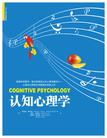认知心理学
出版时间:2010-7 出版社:机械工业出版社 作者:罗伯特·索尔所 Robert L. Solso,奥托·麦克林 Otto H. Maclin,金伯利·麦克林 M. Kimberly Maclin 译者:邵志芳
Tag标签:无
前言
致读者欢迎阅读《认知心理学》!无论您是学生、教师,还是其他邂逅本书的读者,我们都希望您能够欣赏本书,并从中了解心智与大脑如何工作的诸多信息。30多年前,罗伯特。索尔所正在撰写这本书的第1版。这对他来说是一个巨大的挑战,因为除了现在被奉为经典的摩尔(More,1939)和奈瑟(Neisser,1967)的书,以及当时能够查到的上百篇文章和专题报告以外,那时别无样例可循。罗伯特于1974年在斯坦福大学聆听了埃德.史密斯的认知课程,受到很大的影响。埃德熔铸写作材料的风格在现在这本书中仍有体现,尽管多年来有了不少改变,但这种风格仍影响着当今认知心理学的数十本教材,影响着全美国和全世界的学生和教师。本书已经被译成俄语、土耳其语以及汉语。除了现在这个版本,本书还出了一个国际版。您也许知道,罗伯特已于2005年1月去世。为他送行的那天,刚好是情人节——非常符合他热爱生活、热爱科学、笔耕不辍的为人。我们很自豪能够成为他的博士生,并无数次和他探讨认知心理学,探讨将我们的科学传播给他人的真实意义。我们深感幸运,能够秉承罗伯特30多年前开创的传统,继续本书的出版。在这个版本的修改中,我们尽最大努力保持了罗伯特书写教材时的眼光,它荣耀着认知心理学的过去和未来。
内容概要
本书是一部经典的认知心理学教材,涵盖了感觉、知觉、注意、记忆、意识、知识表征、概念形成、推理、决策、问题解决、创造、人类智力、语言、认知以及人工智能等知识概念。其主要的特点是,注重从宏观上叙述和思考认知心理学的理论、模型、实验以及实际应用,并在许多地方提出了所述领域值得进一步研究的问题,很值得读者细心玩味。
作者简介
作者:(美国)罗伯特·索尔所(Robert L.Solso) (美国)奥托·麦克林(Otto H.Maclin) (美国)金伯利·麦克林(M.Kimberly Maclin) 合著者:邵志芳
书籍目录
导读前言术语表第1章 导言与研究方法 第2章 认知神经科学第3章 感觉、知觉与注意 第4章 模式识别第5章 记忆模型与短时记忆第6章 记忆理论与长时记忆第7章 遗忘与识记第8章 意识第9章 知识的言语表征第10章 知识的视觉表征第11章 语言第12章 认知的毕生发展第13章 概念形成、逻辑和决策 第14章 问题解决、创造力和人类智力 第15章 人工智能 参考文献
章节摘录
插图:An alternative to template matching and feature analysis as a means of recognizing ob-jects is prototype matching. It seems likely that, rather than form specific templates oreven features for the numerous different patterns we are called upon to recognize, somekind of abstraction of patterns is stored in memory and that abstraction serves as a pro-totype. A pattern would then be checked against the prototype and, if a resemblancewere found, the pattern would be recognized. Prototype matching in humans seems tobe more compatible with neurological economy and memory search processes than tem-plate matching, and it also allows for recognition of patterns that are "unusual" but insome way related to the prototype. In this system, we may, for example, form a proto-type of the letter S, against which all other Ss are evaluated in terms of how closely theyfit the prototype. Where the degree of mismatch is great, as in the case of letters otherthan S, we recognize the lack of a match and reject the letter as an S; we may then searchfor a prototype that fits the letter better.Evidence for prototype matching is all around us, and it has a strong intuitive cred-ibility. For example, we recognize a Volkswagen, even though it may be of a different coloror shape or have a lot of fancy doodads that are at odds with the prototype in our head.A prototype in this sense is not only an abstraction of a set of stimuli, but it is also theepitome or the "best" representation of the pattern.
图书封面
图书标签Tags
无
评论、评分、阅读与下载
用户评论 (总计35条)
- 说实话其实目前我还没敢深入去读它。在买这本书的同时我也买了一本国内的心理学入门教材,打算先做好入门准备再全力去啃这家伙……术语+外文,身为外语系同学也不敢掉以轻心啊。
- 英文版,,和中文、版同样精彩
- 网页上的书籍介绍,没有清晰明确地写上是英文版。买回来一看,才知道是英文的。
- 很经典,内容比国内的教材丰富有趣得多~只是全英文确实开起来比较累哦~
- 虽然是英文原版,但是语言不是很晦涩,比较好懂,配套中文译本更好
- 当当的书,质量很好,送货快,很喜欢的书
- 书比较厚,需要耐心去看,可以作为参考书籍!
- 原版的书有点困难
- 很不错,一直想看,这回终于买下了
- fair enough
- 纯英文的啊,我有点蒙了
- 英文貌似很有深度,但是一个中文都没有
- 语言的确有点艰涩,可能和我英语底子一般有关。可以用来记记专业单词,培养些心理学素养。
- 已经出到第8版了,可惜没看仔细,原来是英文版,太挑战了!希望读完了孩子还没长大!
- 老师推荐的,虽然是英文版,其实也不难懂。
- 已经买了,还没有时间来看,感觉不错
- 喜欢的书终于买到,很喜欢,书的质量好
- 全英文看不懂,退货很顺利,上门退货服务很好。
- 以为是中文版的~结果是导论是中文的~很难啃啊~
- 一般啦,急着用
- 书倒是不错,就是太囧了!
- 有点难 因为水平还不够
- 人人都该读点心理学,英语不难,四级水平吧。出了些专有名词
- 书的质量很不错哦 希望赶快看完……呜呜……
- 很喜欢的~~~包装没有拆呢
- 书的质量挺好的,但是有点难,非专业不推荐
- 逻辑性,系统性都很强的书。
- 这本书很好,我很喜欢,内容值得看@
- 还是英文原版好,和中文版有出入中文只做参考吧,原版才是正道
- This is an amazing book offering the basic ideas of cognitive psychology with terse explanation and illustrative experiments.
- 不错!国际上现在最权威的认知心理学教材!
- 很经典的一本心理学教材,可惜是英文的,读起来有点费劲
- 无论是纸质还是印刷,,都向盗版。。并且还有磨损。,,,完全不值这个价。。。
- 买回来藏着,,,我知道会用到的,当字典用也好啊
- 虽然书皮边有些不平整,里边有几页有些黄色的油点,不过还好。
